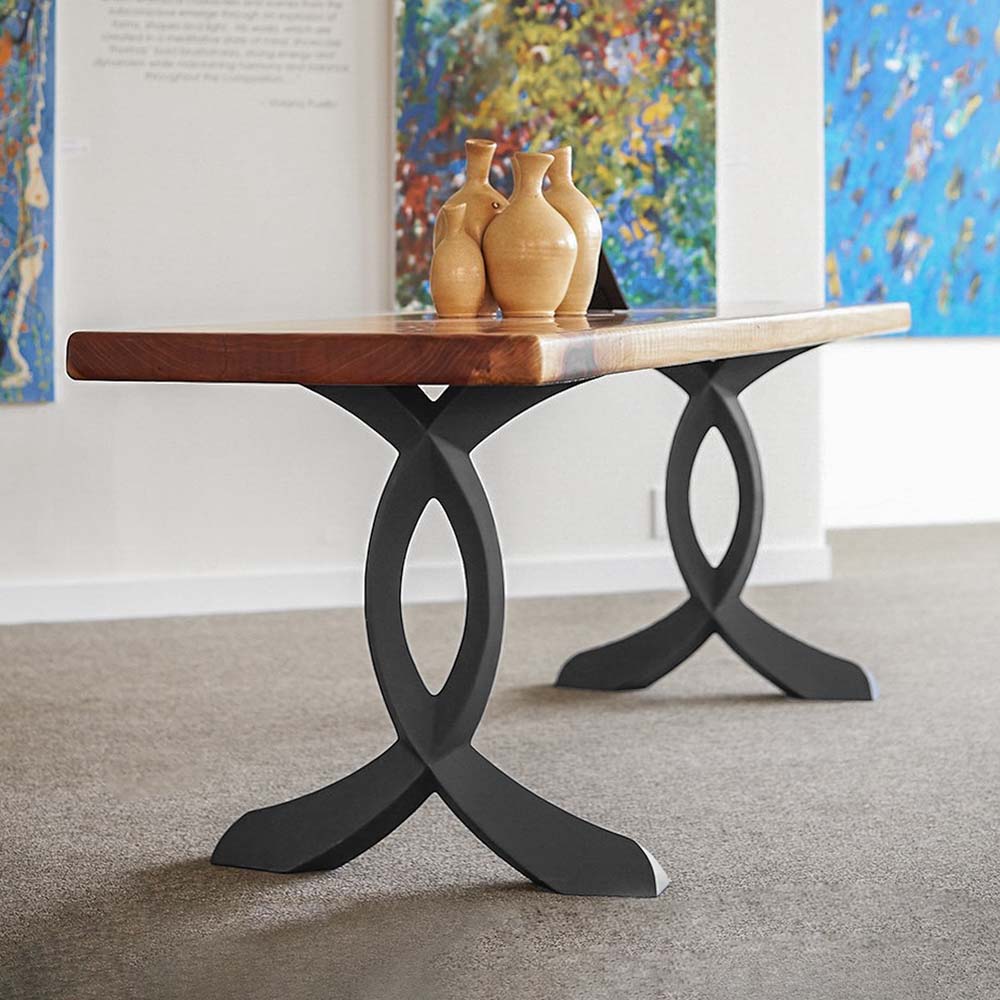The Ultimate Overview to Choose Durable Dining Room Table Legs
The Ultimate Overview to Choose Durable Dining Room Table Legs
Blog Article
A Comprehensive Check Out Eating Table Leg Styles: Discovering the Suitable Suit
Choosing the ideal eating table leg design is crucial for both visual appeal and functional performance. For those with bigger tables, trestle legs make sure durable assistance, whereas barrette legs present a mid-century modern ambiance with their minimalist style. The x-shaped legs blend modern design with boosted stability.
Typical Four Legs
Among the different types of dining table leg styles, the conventional four-leg design stays a timeless option for lots of homes. Four legs provide balanced assistance, making sure the table remains secure and qualified of bearing substantial weight (dining room table legs).
From an aesthetic viewpoint, the traditional four-leg style can be easily adapted to different indoor styles. Whether crafted from timber, metal, or a mix of materials, these legs can be elaborately sculpted, sleek and minimalistic, or anything in between. Their adaptability allows them to enhance both rustic and contemporary settings perfectly.
Additionally, the straightforward framework of the four-leg style helps with convenience of activity and placement within a space. Unlike more complicated bases, this design reduces obstructions, giving adequate legroom for diners. In recap, the conventional four-leg table leg design marries sustaining beauty with sensible performance, making it an astute option for those seeking both type and feature in their dining furnishings.
Stand Base
Often celebrated for its sophisticated and space-efficient design, the stand base is a distinguished choice to the conventional four-leg arrangement in dining table leg designs. This distinctive base normally features a single main column supporting the tabletop, which can differ in form, from ornately carved wood to smooth, modern-day metal. Among the key advantages of the pedestal base is its capacity to maximize legroom and seating versatility. Without edge legs, restaurants are afforded higher liberty of movement, making it a suitable selection for round and oval tables that promote even more intimate and comprehensive gatherings.
Additionally, the stand base's main assistance can take care of substantial weight, allowing for the use of heavier tabletops, such as marble or thick hardwood. This strength coupled with its aesthetic flexibility makes the pedestal base a popular choice in both conventional and contemporary interior settings. It can seamlessly integrate with various layout motifs, from timeless style to minimal modernity. The central column itself offers a canvas for intricate layouts and imaginative expressions, including an aspect of visual passion under the table. In summary, the pedestal base incorporates capability snappy, making it an improved and functional alternative for diverse dining settings.
Trestle Legs
Trestle legs offer a robust and ageless foundation for eating tables, characterized by their straight cross-bracing and durable assistance beam of lights. Stemming from medieval times, this layout has evolved yet maintained its vital framework, making it a perennial fave in both conventional and modern settings. The main trestle beam, commonly supported by 2 or even more vertical posts, uses extraordinary security, allowing for bigger table lengths without the requirement for added legs.
A significant benefit of trestle leg tables is the ample legroom they provide. Unlike tables with 4 corner legs, the absence of blockages at the table's sides provides unobstructed room for chairs and diners, improving convenience and accessibility. This makes trestle tables suitable for suiting larger events, whether in an eating area or a banquet hall.
The aesthetic adaptability of trestle legs is significant. Available in a range of products such as timber, steel, and composite, they can be finished to complement a large array of indoor designs. From rustic farmhouse to sleek modern styles, trestle legs can be personalized to fit specific preferences. Their long-lasting appeal and functional benefits make trestle legs a compelling option for those seeking both style and functionality in their eating table.
Hairpin Legs

The appeal of barrette legs hinges on their simplicity and adaptability - dining room table legs. Available in a series of products, consisting of steel and brass, they can be finished in many shades to complement different indoor designs. Whether coupled with a rustic wooden table top or a modern glass surface area, hairpin legs effortlessly blend my blog capability with a touch of classic charm
Toughness is an additional notable function of barrette legs. Regardless of their fragile look, these legs are engineered to bear considerable weight, making sure the eating table continues to be stable and protected. Furthermore, they are fairly very easy to mount, making them a preferred choice for DIY enthusiasts and professional furniture makers alike.
X-Shaped Legs

Constructed from products such as steel, timber, or a combination of both, X-shaped legs can be customized to match different design preferences. Steel legs usually offer a sleek and commercial feel, suitable for loft-style houses and contemporary dining areas. On the other hand, wood X-shaped legs provide a warmer, much more rustic allure, ideal for farmhouse or eclectic interiors. The versatility in over at this website products enables house owners to tailor their dining tables to much better fit their total style system.
Moreover, the engineering behind X-shaped legs makes sure also weight distribution, reducing the risk of tottering and enhancing sturdiness. This makes them especially well-suited for larger table that need added support. Basically, X-shaped legs mix practical engineering with modern aesthetics, making them an ageless selection for diverse eating atmospheres.
Conclusion
A thorough understanding of eating table leg designs exposes the distinctive characteristics and advantages of each style. Trestle legs guarantee durable support for bigger tables, and hairpin legs introduce a mid-century modern visual.
Report this page